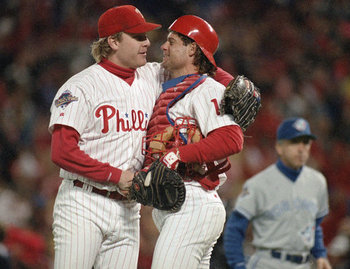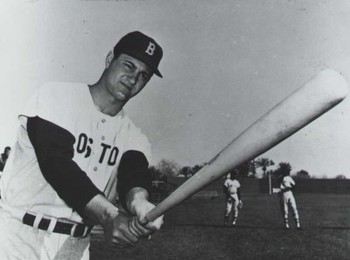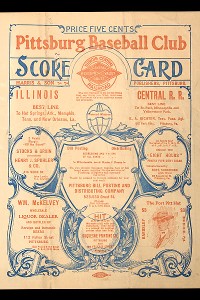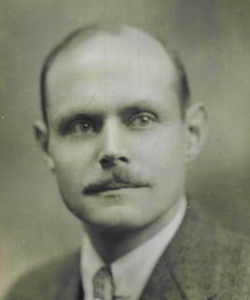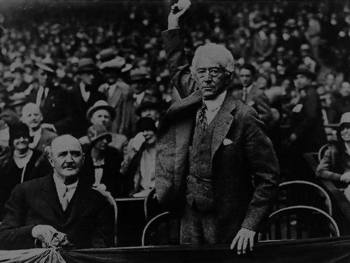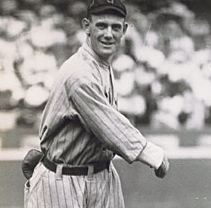12. 1980 Houston Astros
The Astros had a tough road to their first ever playoff appearance. During their time in the league they sat in the NL West during the dynasties of the Dodgers and Reds. When they signed Nolan Ryan after the 1979 season they felt they finally had the missing piece to win the World Series. Along with J.R. Richard it appeared Houston had the perfect 1-2 pitching punch they needed. They very nearly did. Richard, who had gone 18-13 and led the league in ERA in 1979, started off the season 10-4 with an ERA under 2.00 but on July 30 he suffered a stroke, ending a career with a promising future. Still, Houston reached the NLCS for the first time and faced a Philadelphia Phillies team that had disappointed the Phanatics for the last 4 years in a row. The first game was a 3-1 Philadelphia win behind Steve Carlton. Game 2 is when the battle really started. Houston scored four in the top of the 10th to win Game Two. Game Three went 11 innings and when the Astros scored one in the bottom of the 11th they were one win away from a trip to the Fall Classic. Game Four saw the Astros jump out to a 2-0 lead before falling behind 3-2. They tied the game in the bottom of the 9th with one run but when the Phillies scored a run in the top of the 10th Philadelphia forced a Game 5 in the Astrodome. For the fourth game in a row the two teams needed extra innings to decide the game. For the first time all year, Houston lost a game pitched by Nolan Ryan when leading after 8. Tied at 2 in the 6th, Houston scored 3 in the bottom of the seventh to seemingly clinch the series but a 5 run Phillies 8th and a 2 run Astros 9th sent the game into the 10th. With two outs in the 10th Garry Maddox doubled to drive in Del Unser with the go ahead run. The Astros went down in order in the bottom of the 10th and the Phillies advanced to destiny. Houston lost two of the three games in extra innings and had a chance to win each of the games they lost. The feeling in Houston was that things would have been different if Richards were healthy. It would be six more years before the Astros reached another post season and ten years after that for their third appearance.
11. 2002 San Francisco Giants
The Giants had dominated the NL West since Barry Bonds joined the team in 1992, yet they had not advanced to the World Series until 2002. With the support of J.T. Snow, Jeff Kent, Kenny Lofton, David Bell, Benito Santiago and Reggie Sanders, Bonds was able to swing away anytime he wanted knowing the rest of the lineup could score runs even if Bonds didn't hit a Home Run. In the days before Lincecum, Cain, and Baumgarner, the Giants depended on the arms of Kirk Reuter, Jason Schmidt and Livan Hernandez. Facing off against the Giants were the underdog Anaheim Angels, known more nationally for the rally monkey than for the players on their team. Anaheim fans understood how good these players were and though they loved the rally monkey, Halo fans knew this team won because of talent. The general consensus was that the Angels would need a miracle. In Game 1, in his his first World Series at bat, Bonds and the Giants seemed to confirm what everyone believed when he crushed a pitch for a Home Run. Cameras caught Angels' legend Tim Salmon in the dugout saying "That is the furthest I have ever seen a ball hit." The Giants took a 3-2 series lead with a 16-4 martyring of the Angels and seemed ready to end the year in Game 6 with a 5-0 lead in the 7th inning. Just 9 defensive outs away from a World Series, the rally monkey went into action, leading to a 6 run Angels miracle rally to force a Game 7. The Giants scored first in the second inning of Game 7 but the Angels seemed to be getting some miracle help from somewhere. Whether it was Disney Magic, the singing Cowboy helping out from above or just divine intervention, the Angels won Game 7 4-1 sending the Giants home shell shocked. Just like in the bible, the little guys slayed the Giants.
10. 1987 Detroit Tigers
The 1984 Tigers were one of the best teams in history but their follow up seasons in 1985 and 1986 were total disappointments. With one of the best lineups of the 1980's including unsung heroes Lou Whitaker, Chet Lemon and Larry Herndon to go along with bona fide stars Alan Trammell, Kirk Gibson and Jack Morris, the 1987 Tigers somehow were disappointing through the first half. The Tigers changed their luck at the trade deadline with one of the most successful trade deadline deals ever. They traded a minor league Pitcher to the Atlanta Braves (you may have heard of that minor leaguer: John Smoltz) for Pitcher Doyle Alexander. Alexander was better than expected going 9-0 for Detroit. Even better, as Alexander and Jack Morris kept winning games, the Toronto Blue Jays, in first place, kept losing games. Down 3 1/2 games after a loss to Toronto on September 26, the Tigers won 6 of the last 8, including three head to head against the Blue Jays to end the season. With the great comeback and the momentum heading into October the Tigers were expected to roll through the inexperienced Twins. Sparky Anderson had his pitching rotation set the way he wanted with Alexander pitching in Game 1 and Jack Morris in Game 2. Instead the Twins beat Alexander with a late rally in Game 1. Morris pitched all of Game 2 but lost to Bert Blyleven with a save from former Tiger Juan Berenguer. Down 2 games to 1 the Tigers knocked out Les Straker (who one week later would pitch a strong game in his only World Series appearance) with five runs in the third but still needed a late rally for an 8-7 win. Viola and Blyleven were too much for the Tigers and the Twins advanced in five games. The Tigers would not reach the playoffs again until 2006.
9. 1992 Pittsburgh Pirates
The Pirates in the early 1990's were the little engine that could. Following the Willie Stargell era the team had to rebuild and they did it through smart trades and home grown talent. It was a collection of stars and role players. Some were brought from other organizations (Andy Van Slyke from St. Louis, Jay Bell from Cleveland, Doug Drabek and Don Slaught from the Yankees, Danny Jackson from the Reds) as well as some home grown talent (Jose Lind, Jeff King, John Wehner, Tim Wakefield, Denny Neagle and Orlando Merced). The Bucos made the playoffs in 1990 and 1991 losing both times. When they lost Bobby Bonilla to the Mets, Sid Bream to the Braves and John Smiley to the Twins most expected the Cardinals or the rebuilt Mets to retake the division. Instead the Pirates, knowing that Barry Bonds was a free agent at the end of the year, were able to win one more division title. After trailing the Braves 3 games to 1 in a rematch of the great seven game series from the year before, the Pirates fought back and tied the series at three games each. A sacrifice fly by Orlando Merced in the first inning and an RBI single by Van Slyke in the top of the 6th gave the Pirates a late two run lead in Game 7. Doug Drabek was spectacular through 8 innings but gave up consecutive hits to Pendleton, Justice and Bream to start the 9th before being replaced by Stan Belinda. Ron Gant cut the lead to 2 with a sacrifice fly and a walk to Damon Berryhill reloaded the bases. Brian Hunter popped out to Jay Bell. That brought up Francisco Cabrera, a little used pinch hitter with two outs. Cabrera singled to left field driving in David Justice. Sid Bream, the former Pirate, was one of the slowest runners in the league because of knee injuries but he was limping as fast as he could rounding third as the throw was on the way to the plate. Mike LaValliere, the Pirates Catcher, took the throw just to the right of home plate and dove to his left, trying to tag Bream before he reached the plate. Sliding in just ahead of the throw, the Braves advanced to the World Series. What looked like a miracle come back turned into a devastating defeat to end the Pirates run in October. They would not have another serious playoff run until 2013.
8. 1982 Milwaukee Brewers (aka "Harvey's Wallbangers")
You would think Brewers fans would be satisfied with any sort of playoff berth but they were so close to having it all now. They had built their team from the ground up with Paul Molitor, Jim Gantner, Robin Yount and added some key veterans like Pete Vukovich, Cecil Cooper and Don Sutton. "Harvey's Wallbangers" knocked their way to a three games to two lead and needed just one win in the final two games for the first World Series title in franchise history. Game 6 was a bad experience for Don Sutton as the Cardinals won 13-1. Game 7 was a tight pitching duel for most of the game. Joaquin Andujar squared off against the Brewers ace Pete Vuckovich. It was a match of crazy, intense personalities which led to a near fight between Andujar and Jim Gantner. The middle innings saw the Brewers take a 3-2 lead in the 6th only to have the Cardinals take the lead in the bottom of the inning and win 6-3 as Vuckovich tired after a long season. The Brewers would not see the postseason again until 2008.
7. 1969 Baltimore Orioles
In the early 1960's there were jokes about which would happen first: man would land on the moon or the Mets would reach first place. The joke was that there was no chance that the Mets would ever reach first place. On July 20,1969 the race officially ended as the US landed on the moon (for the sake of moving the article along, conspiracy theorists can just accept it for the time being) but it was closer than people thought. The Mets were only 5 games out of first in second place. Then on September 10 the Mets did the even more unthinkable, they actually reached first place. When they advanced through the first NLCS to reach the World Series their opponent was the heavily favored, talent stocked Baltimore Orioles. The Mets were the lovable underdog but the Orioles were the proven winners with players like Frank Robinson, Brooks Robinson and Boog Powell. The Mets may have had Koosman and Seaver but the Orioles countered with Jim Palmer, Dave McNally and Mike Cuellar. The O's won 109 games that year, one of the reasons they are so high on this list, and took game one of the 1969 Series with seeming ease. The mood in the Orioles clubhouse after Game 1 was relaxed and jovial. If the Orioles thought their Game 1 win impressed the Mets they were way off. In the other locker room the feeling was "we could have won that game." Game 2 was a great pitcher's duel between Dave McNally and Jerry Koosman and the Mets led 1-0 at the 7th inning stretch. Paul Blair singled to start the Orioles 7th, stole second and scored on a Frank Robinson, 2 out double and the Baltimore faithful got loud. They became eerily quiet when the Mets took the lead in the 9th and held on for a 2-1 win. The Mets won Game 3 5-0 and then took a commanding 3 games to 1 lead with a 2-1, 10 inning victory in Game 4 (a game that saw Earl Weaver become the first manager thrown out of a World Series game since 1935). It wasn't necessarily that the O's bats were silent. They were hitting the ball well. The problem was that the Mets outfielders were catching everything they hit, most of them in almost unbelievable fashion. Everytime a Mets outfielder made a spectacular catch, the announcers could barely finish comparing it to the other greatest catches in World Series history, before that catch was topped by the next one. The Orioles were clearly stunned and what some still consider the greatest Orioles team ever went home for the winter to rest their broken wings.
6. 2011 Texas Rangers
The 2010 Rangers were considered a surprise World Series participant. The 2011 Rangers had unfinished business. When the Rangers faced the experienced Tampa Bay Rays in the first round, few expected the Rangers to advance. When they faced the loaded, red hot Detroit Tigers in the ALCS few felt Texas would keep going. When they faced the Wild Card Cardinals, who had upset the great pitching talent of the Phillies and the heavily favored Brewers (see #18 on this list), the Rangers finally had some support. Regardless of what was expected, the Rangers were on a mission to finish what they had started the year before. In one of the greatest World Series in history the Rangers appeared to have the thing won twice in Game 6 only to have the Cardinals fight back and force Game 7. Twice only one out away from a world championship, the Rangers went home with the same feeling they had in 2010.
5. 2001 Seattle Mariners
The 1995 Mariners saved baseball in Seattle. The 2001 team gave Mariners fans nearly as big a shock. Certainly it would take a miracle to approach the veneration shown to the 1995 magical season but the surprise of 2001 could come close. The 2001 team had limited playing time from Jay Buhner, no Ken Griffey, no Randy Johnson and no Alex Rodriguez. Heading into the 2001 season the Mariners were expected to be near the bottom of the suddenly competitive AL West. Led by Ichiro, only the second player to win the MVP and Rookie of the Year in the same season, Brett Boone, John Olerud, Edgar Martinez, Mike Cameron and the pitching combination of Jamie Moyer, Freddie Garcia and Aaron Sele, the M's started the season winning 11 of their first 15. They won their next 9 straight. They won another 8 straight in early May and didn't reach double digit losses until May 18. They would also have winning streaks of 15, 5, 7, 6 and another of 6. Meanwhile, the longest losing streak was four games. Other than the four game losing streak they never lost more than two consecutive games. They lost only 46 games all year. The focus of the world changed just before the 2001 post season, for obvious reasons, and the attention went to the resiliency of New York as opposed to the record 116 wins in Seattle. Three of the first four games were close, tense affairs each won by the Yankees. Only Game 3 was a blow out as the M's pounded Yankee pitching for 14 runs. But the emotions of the time and the talent of the Yankees were too much for the Mariners and they fell in a Game 4, 12-3 pounding. The 2001 World Series was one of the most exciting,emotional and dramatic World Series ever but it would have been fun to see what the Mariners could have done against Schilling and Johnson.
4. 1988 Oakland Athletics (aka "The Bash Brothers")
The team dubbed the Bash Brothers had everything. The first man ever to hit 40 Home Runs and steal 40 bases in the same season (Jose Canseco), a young power hitting first baseman and reigning Rookie of the Year who had hit 49 Home Runs as a scrawny rookie (Mark McGwire), the best pitcher in baseball (Dave Stewart), four players with significant prior playoff experience (Dave Henderson, Don Baylor, Dave Parker and Bob Welch), a defensive wizard at third base (Carney Lansford), the season's Rookie of the Year (Walt Weiss), young budding stars (Tony Phillips, Luis Polonia, Mike Gallego, Stan Javier and Terry Steinbach), the man considered (at the time) the greatest closer of all time (Dennis Eckersley) and the man some consider the greatest manager of all time (Tony LaRussa). There was absolutely no holes on this team and they rolled through a very strong Boston Red Sox team in the ALCS. Their opponents in the World Series struggled to win the NLCS over the heavily favored Mets and apart from Orel Hershiser and Kirk Gibson there was little to fear in the NL Champs, especially when it was revealed that Kirk Gibson, the league MVP wouldn't even play. The Dodgers consisted of players few wanted. Mike Davis and Alfredo Griffin had been cast off by the A's. John Tudor was given up on by the Cardinals. Mickey Hatcher was unwanted by the Twins. The Dodgers pitching staff was a huge question (Fernando Valenzuela was suffering through injuries and Don Sutton was used as a starter during the regular season but he was near the end of his Hall of Fame career. Neither was on the post season roster). Add to that a closer, Jay Howell, who was suspended during the NLCS for using pine tar on his glove and the match up appeared to be a joke. When Jose Canseco hit a grand slam in the first game and Dennis Eckersley faced off against a gimpy Gibson, the A's could smell desperation. Everything was going as planned.. Then Gibson made history in his only at at of the series. The already beat up Dodgers lineup took another hit when Mike Marshall left Game 2 with an injured back but the Dodgers won 6-0. The A's won Game 3 on a dramatic bottom of the 9th Home Run by Mark McGwire and seemingly the magic would return, especially with Dave Stewart pitching in game 4. Even worse for the Dodgers, they lost Mike Scioscia in Game 4 and now were playing without three powerful bats in their lineup. If ever a team came back from a 3 games to 1 deficit, this A's group would be the team. Unfortunately for the A's Stewart lost Game 4 and Hershiser dominated in a 5-2 Game 5 to close out the season. The A's would make improvements in the offseason (imagine having to improve a team this good) and win the 1989 World Series but a lot of the joy of that win was lost when the Series was interrupted by the 1989 bay area earthquake.
3. 1997 Baltimore Orioles
Going wire to wire is an accomplishment that can be claimed by very few teams. The 1984 Tigers won the World Series after doing so, as did the 1990 Reds. Very few others had. The 1998 Yankees didn't do it, nor did the 1927, 1936 or 1977 Yankees. The 1997 Orioles did. Every single day of the 1997 season was spent in first place in the American League East. Similar to the 2011 Rangers, this team had unfinished business and they were focused. They had lost to the Yankees in 1996 in the ALCS, a series seemingly turned around by a 12 year old boy and an outfielder who didn't jump for a ball. After a decade and a half of poor teams (including the embarrassing 1988 season) the Orioles had finally put a team around Cal Ripken and Mike Mussina. It was a team that featured superstars Brady Anderson, Harold Baines, Jimmy Key, Eric Davis, Raphael Palmeiro and Roberto Alomar. It also had great role players B.J. Surhoff, Mike Bordick and Chris Hoiles. It had zero holes. Their bullpen was nearly perfect with Jesse Orosco, Armando Benitez and Randy Myers. They won 98 games and beat a strong Seattle team in the ALDS. When the Indians took out the Yankees there did not seem to be any way the Orioles would fail to advance and when the Marlins beat the Braves in the NL, the Orioles should have waltzed through the rest of the post season. The Orioles cruised through Game 1, 3-0 and that was with Scott Erickson on the mound. They still had Jimmy Key and Mike Mussina lined up. A 2 run Home Run by Cal Ripken tied up Game 2 and Mike Bordick put the O's ahead in the 6th with a 2 run single. With two on, two out and two strikes, Marquis Grissom checked his swing. The Orioles appealed the call but it was ruled he did not swing. The next pitch changed the series. If the umpires get the checked swing call right the Indians leave two stranded and the Orioles hold the lead. Instead Grissom gives the Indians a 5-4 lead on a three run Home Run and the Series is tied at 1. Game 3 became one of those classic October games that will be remembered for decades. Mike Mussina pitched 7 innings, struck out 15 Indians and allowed only one run. Orel Hershiser pitched 7 innings for the Indians, allowed only 4 hits and no runs. the Orioles tied the game in the top of the 9th and the game went on and on. The Orioles loaded the bases in the top of the 11th but couldn't score. The Indians did the same in the bottom of the 11th. The Orioles wasted a Geronimo Berroa double in the 12th and then came the controversy in the bottom of the 12th. With one out and runners on first and third, Omar Vizquel squared around for a suicide bunt. The ball came in and bounced off the glove of Lenny Webster. It rolled less than five feet to the left of home. Grissom (yes, him again) came sprinting from 3rd. As Webster calmly picked up the ball Grissom ran right past him to score the wining run. The O's went nuts. They swore it was a foul ball but the ump said it was not touched. Webster can be seen on the replay asking the umpire "how could you miss that?" but it changed nothing. The O's forced a Game 6 thanks to an Eric Davis Home Run and it was a great Game 6 if you are a Cleveland fan. The 1-0, 11 inning thriller was ended by a Tony Fernandez Home Run and the Orioles became the first team in history to spend every day of the regular season in first place and not win the World Series.
2. 1954 Cleveland Indians
It is a little hard to decide which was more amazing for this Indians' team. Was it winning 111 games or was it beating the Yankees who had won five straight pennants (1949-1953) and would win another four straight (1955-1958)? Led by one of the greatest managers of all time, Al Lopez, the Indians started off 3-6 but went on a tear that few could have imagined. Led by a great starting rotation of Mike Garcia, Bob Lemon, Early Wynn and an aging Bob Feller the Indians staff also received help from Tigers' legend Hal Newhouser in his second to last season. The Indians also received offensive power from Al Rosen (reigning MVP), Larry Doby, Vic Wertz and Dave Philley. The Indians appeared unstoppable but legend has it that Willie Mays single handedly stopped them. In Game 1 at the Polo Grounds, Vic Wertz drove a ball that looked like it was going to break the game wide open. Mays took off at the crack of the bat and ran straight towards center field with his back to the plate. He ran down the fly ball, stuck out his glove, known as "the place where triples go to die" (the guy was so good that even his glove had a nickname) and caught the ball in what has been forever after called "the catch". The legend is that this catch was the reason the Giants swung the momentum to their side and overcame the Indians. The truth is that there was another unsung hero for the Giants. Dusty Rhodes, not a name that resonates through history, had four hits in the series. The four hits were in just six at bats and two of them were Home Runs. Rhodes hit .667 for the Series and drove in seven runs. The Indians are still waiting for their next World Series win.
1. 1906 Chicago Cubs
Given that the past 30 years has seen an all bay area World Series (Giants-A's),an all New York World Series (2000), two all CA World Series (Angels-Giants and Dodgers-A's) an all Midwest World Series (Cardinals-Tigers) and even an all Missouri World Series (Royals-Cardinals) it is hard to believe that an all Chicago World Series has not been a reality for over a century. There is a better chance now of having a Baltimore-Washington beltway series than there is a Chi town World series. In 1906, the Cubs were clearly the greatest team that had ever been assembled and some have made a strong case that they still are. The Cubs, in a 154 game schedule, won 116 games. That is a winning percentage of .763, a percentage not in the same zip code of any other team. They were a team stacked with Hall of Fame players Three Finger Brown and of course the legendary, Tinker, Evers and Chance. But the rest of the team was equally impressive Johnny Kling was considered the best defensive Catcher of the era. Along with the outfield of Jimmy Slagle, Jimmy Sheckard and Wildfire Schulte it all gelled to form one of the greatest teams ever. Their competition in the 1906 World Series, just the third ever, were the crosstown White Sox, nicknamed this year as the "hitless wonders". They were led by a pitching staff of Nick Altrock, Frank Owen, Doc White and a young Ed Walsh. The hitless wonders were anything but hitless in the Series. Led by Frank Isbell's four doubles (all four in Game 5), four runs and four RBI, and George Rohe's seven hits, the hitless wonders overcame the greatest team of all time. Short term the loss was minimized by back to back World Series wins in 1907 and 1908. Long term, the Cubs are still searching for World Series win #3. The Cubs could have been the first team to win three straight World Series cementing themselves as one of the greatest dynasties of all time.
Think one of the top 25 teams are too high or too low on the list? Think there is a team missing? Email me your list or leave a comment. Check back next week for the start of the two part, Top 20 Most Shocking Octobers.
TRIVIA QUESTION:
The 1996 ALCS between the Yankees and Orioles was seemingly turned around by a 12 year old boy who reached over the fence and an Orioles' outfielder who failed to jump for the ball. What were the names of the 12 year old boy and the Orioles' outfielder?
Congratulations to Hope and TJD for guessing the answer to last week's trivia question!
ANSWER TO LAST WEEK'S TRIVIA QUESTION:
Photo of Eddie Gaedel in his only official plate appearance Courtesy of Sports Illustrated
The St.Louis Browns were not a very successful organization. They had very few highlights and were known more for their ineptitude than for their success. In the 1940's and 1950's the team was owned by Bill Veeck who was creative in finding ways to get fans into the stands. One of his most famous promotions was signing 3 feet 7 inches tall Eddie Gaedel for one game. On August 19, 1951 Eddie Gaedel had his only career plate appearance, a walk. The uniform number issued to Gaedel was 1/8.
Congratulations to Hope and TJD for guessing the answer to last week's trivia question!
ANSWER TO LAST WEEK'S TRIVIA QUESTION:
Photo of Eddie Gaedel in his only official plate appearance Courtesy of Sports Illustrated
The St.Louis Browns were not a very successful organization. They had very few highlights and were known more for their ineptitude than for their success. In the 1940's and 1950's the team was owned by Bill Veeck who was creative in finding ways to get fans into the stands. One of his most famous promotions was signing 3 feet 7 inches tall Eddie Gaedel for one game. On August 19, 1951 Eddie Gaedel had his only career plate appearance, a walk. The uniform number issued to Gaedel was 1/8.


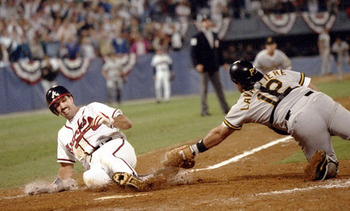


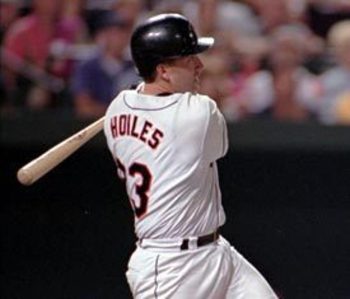

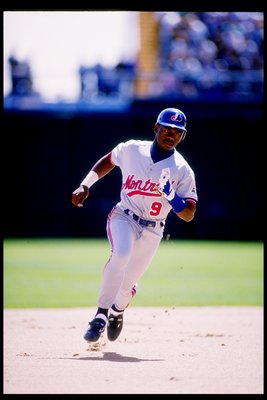


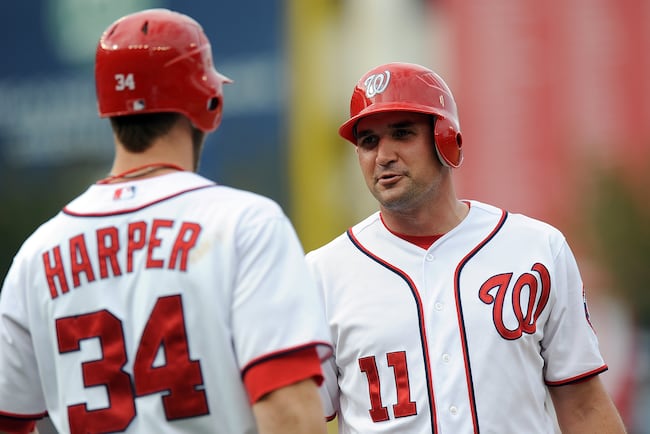
.jpg)
